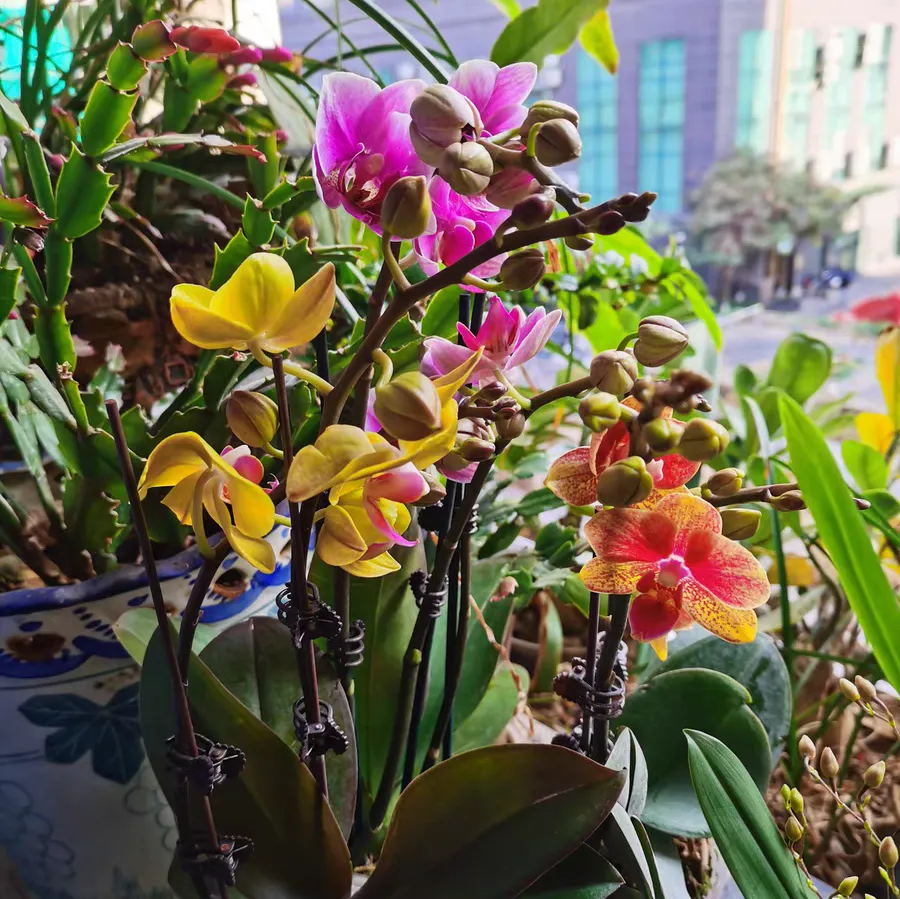What should I do if Phalaenopsis is severely short of water?

Share with
When a Phalaenopsis orchid is extremely water-deficient, the plant will emit obvious "distress signals": shriveled and wrinkled roots losing flexibility; folded and soft leaves with even burnt edges; dried flower spikes and prematurely withered flowers. If not addressed promptly, the plant's life will be threatened. Below are the first-aid methods and maintenance key points.
### I. First-Aid Methods
#### Pruning
First, find a clean gardening shear, disinfect it with alcohol in advance, and cut off all dry leaves and roots of the Phalaenopsis. These dry parts are useless and prone to attracting pathogens. Cut them off decisively to concentrate nutrients on the healthy parts.
#### Repotting
1. **Choosing planting medium**: Select highly breathable materials like sphagnum moss mixed with bark, which are conducive to root growth. Soak the medium in clean water first, then squeeze it slightly to avoid excessive moisture.
2. Gently place the pruned Phalaenopsis in the center of a new flower pot, then slowly fill it with the planting medium. Gently shake the pot while filling to ensure the medium evenly distributes around the roots. Note not to compact it too tightly, as this will prevent root respiration. After repotting, place it in a well-ventilated area with diffused light, such as a spot near a living room window, avoiding direct sunlight, which the orchid cannot tolerate.
#### Hydration
1. **Pot soaking method**: Find a container slightly larger than the flower pot and fill it with water to a level approximately equal to the height of the planting medium in the pot. Place the Phalaenopsis pot into the container and let it soak for 15–20 minutes. After the medium is fully hydrated, remove the pot and drain the water at the bottom. Ensure no water touches the stem or leaves to avoid rot.
2. **Water absorption method**: Carefully remove the Phalaenopsis from the pot and place it in a shallow tray. Pour an appropriate amount of water into the tray, submerging about half of the sphagnum moss at the bottom. Allow the sphagnum moss to slowly absorb water. After about 1–2 hours, when the moss is sufficiently hydrated, repot the orchid.
### II. Follow-Up Maintenance
#### Watering
Adhere to the principle of "water when dry, stop when moist." Before each watering, insert your finger about 2–3 cm into the planting medium. If it feels dry, it is time to water. Additionally, use a spray bottle to mist the aerial roots regularly to increase air humidity.
#### Environment
Phalaenopsis prefers temperatures between 18–28°C and an air humidity of 60%–80%. Do not place it near air conditioning vents or heaters, as drastic temperature changes are detrimental to its growth.
### III. Prevention
1. **Regular inspection**: Check the Phalaenopsis weekly, focusing on root color and leaf firmness. If signs of water deficiency appear, hydrate immediately.
2. **Medium replacement**: Replace the planting medium once a year in spring or autumn. Old medium tends to compact over time, affecting air permeability and water retention. Fresh medium will help the orchid thrive.
3. **Humidity increase**: Place a water-filled tray beside the pot or use a humidifier to keep the surrounding air moist, reducing water loss from the orchid.
### IV. Special Cases
If the roots of the Phalaenopsis are completely dry, the likelihood of revival is very low. In this case, try cutting off healthy stem nodes and propagating them via hydroponics or by wrapping them in moss. This may foster new plants.
Tagged in :




Leave a Reply